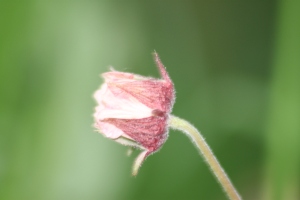Lots of things happening down the Ross this month, including our children’s events that are part of the Gala fortnight. Teddy Bear’s Picnic for 3-6 year olds at Ardalanish and Survivor Camp at our community forest for 9-15 year olds. To find our more and how to book visit our events page and get in touch, hope to see you soon!
In June we did the annual moth count on Burg which is important in managing their population and monitoring the habitat they depend on. With help from NTS colleagues we counted Transparent, Six Spot and most importantly the rare Slender Scotch Burnet. They only fly in June and require a warm, sunny and calm day to count them flying or sunbathing on the steep slopes. It was a lovely day to walk over this gorgeous landscape and we counted a good number of each species.

We ran a wildflower walk on Iona, looking at the species found there. It was a lovely gentle walk identifying the very varied species of flowers, plants and grasses found in the fields and sides of paths. In total, we counted 86 different species including Crested dog’s tail, Red Bartsia and this stunning Northern Marsh Orchid. Thank you to Peter for helping to identify the more difficult ones and everyone who attended on the day.

We attended Iona Abbey to run a session with their guests where we looked at what makes Iona special and our underlying motivations for environmental care. The guests enjoyed exploring the Abbey’s grounds looking at the different species found under their feet, sticking them to these strips. It was lovely seeing each person’s interpretation and creative colour boards.

Into July, and this week we have had visiting botanists to the area, who have been ticking off islands they hadn’t been to around Mull and the Treshnish islands. On Tuesday, myself and Emily had the pleasure of being able to join them and learn from the experts about the different flowers and plants that we found. A useful days training for both of us. We went out on Mark’s ‘Birthe Marie’ to the island of Inch Kenneth in Loch Na Keal. It is a fascinating island composed of limestone and has a rich variety of wildflowers. It was fascinating for both myself and Emily to see just how many different species grew there and surprised myself of how many plants I have already learnt from my time here on Mull.

We had a stunning day of weather on Wednesday morning for our walk at Carsaig Bay. It was calm, sunny and very warm and enjoyed a 3 hour walk along the coast line. We saw lots of wildlife including a Garden Tiger moth, baby frogs and a White-Tailed Sea Eagle! There was also a chance to cool down behind this amazing waterfall and at low tide we went searching for fossils, finding part of this ammonite.
Kate















































